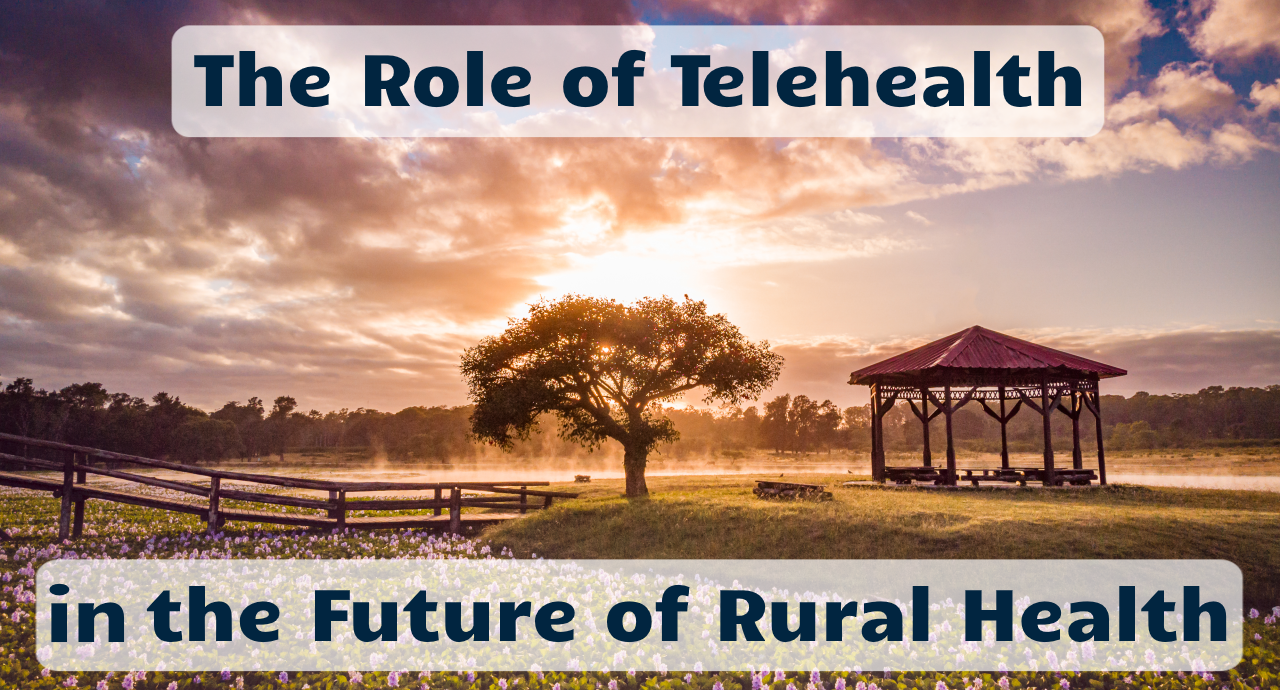Over the past months our team has had many conversations with the leaders, staff and clinicians at many rural health care organizations – Critical Access Hospitals, community behavioral health services, community health centers, rural health clinics, etc.
While the challenges vary from organization to organization, the overall tenor is the same: “some of our physicians (still) use it to some extent but don’t really like it; we understand that telehealth is part of the future, but we have little time to really focus on building it out.”
While all organizations are using telehealth to varying degrees, in the renewed surge of the Covid delta variant many continue to use telehealth as a stop gap measure to get safe access to care to patients and minimize the spread of Covid.
The hope and thinking is that once things get back to normal, the organization will make the time to define the proper place for integrating telehealth into their practices.
But what if we were not to look for gradual, incremental improvement, but a radical evolutionary step, leapfrogging all the smaller steps in between?
Telehealth has much to offer and it is not just about primary care or behavioral health. Many rural residents have to drive for hours to have access to specialists to aid in the treatment of chronic or acute diseases. The health deserts are expanding (Dollar General now has a health care delivery strategy!) and many, especially rural clinicians are burnt out.
The Comfort Zone of In Person Care
As is now very well understood, much of medicine does not require and does not have to rely on the need for an in person visit (though it is the much-preferred modality among clinicians).
Consider though:
- Trusted relationships can be built quickly over live audio/video when the technology works and is of sufficient fidelity and free from logistical and technical distractions.
- Remote exams can be conducted with high efficacy via trained medical assistants operating telehealth-enabled exam tools, such as digital otoscopes, dermascopes, stethoscopes, and other exam tools.
To diagnose and to treat patients every physician, including specialists, in most circumstances relies almost exclusively on lab tests, imaging and their intuition/experience. Under exceptional circumstances (e.g., inexplicable stomach pain) “laying hands on patients” is needed to a diagnosis or (i.e., injections) to treat. The vast majority of ambulatory visits do not require an in person interaction with the clinician.
Not all Telehealth is Direct-to-Consumer to the Patient’s Home
For those new to telehealth, the Covid-19 health crisis created a highly distorted picture with Covid’s almost exclusive emphasis on delivering care to the patient’s home.
In the 12 years prior to March 2020 I had been exclusively working on implementing telehealth services at dozens of health systems where the patient presented at a clinic to be seen remotely. This was in large part for reimbursement reasons, but also because I strongly advised against attempting to deliver care remotely to the patient’s home, especially for ad hoc or one-off visits. Too much of the patient’s environment — the equipment, the connectivity, the lighting, the digital literacy — was largely out of our control to ensure a great care experience.
Yet, out of justified necessity to prevent the spread of infections, Covid catapulted us into the (tricky) world of “DTC BYOD”: direct-to-consumer, bring-your-own-device. And with little tech support and mostly no training a larger majority of clinicians quickly abandoned “live audio/video” in exchange for the (now reimbursable) telephonic care.
And while telephonic care is better than no care, it cannot be a replacement for a proper telehealth visit with live audio/video, preferably in a controlled environment such as a drop in clinic or a rural clinic.
Rural Telehealth on a Greenfield



First off, all direct and ancillary processes to deliver “care at a distance” would be designed to enable everyone to practice on top of their license – to only do those things, that only they can do. That would apply to physicians, nurses, medical assistants, schedulers, billing specialists, etc.
This would in turn attract talent and create an environment that reduces the chance for burnout.
Secondly, very few clinicians (physicians and advanced practice providers) would have to be local. Most consultations, diagnostic visits, and most care could be provided “at a distance” with the assistance of local medical assistants or nurses (depending on the state’s regulation on the scope of practice). In select circumstances (e.g., behavioral health, follow up visits, annual exams, check ins) care could also be provided directly to the patient’s home.
This last “design feature” also means that specialists can be centralized, can live anywhere and can cover a vast rural area without the need for travel. This furthermore allows for their deep subspecialization which, in addition to living where they want to live and little to no commute time, can greatly contribute to a high job satisfaction and can combat burnout.
Thirdly, all of a patient’s health information would be freely shared across all clinicians – primary care, behavioral health, specialists, surgeons, etc. Either on a shared EHR or through a seamlessly integrated HIE that allows for the free flow and import/export of records, notes, test results, etc.
And last but not least (for now), chronic care management would be enabled by a plethora of proven digital health solutions that not only measure patients’ vital signs and other biomarkers, but also address the psychosocial aspects of chronic disease through interactive and passive apps.
The result would be a geographically dispersed network of staffed drop in clinics of varying sizes, equipped with solid telehealth infrastructure; augmented by point solutions to bring connectivity (and/or technology) to those who lack it; empowered by centralized technical, operational, and logistical support for pre visit tech checks, just-in-time troubleshooting, scheduling, workflow design, etc.
Telehealth: A Catalyst and Enabler
Such is the role of telehealth in rural health: telehealth as a catalyst and an enabler to provide quicker and broader access to care across all specialties, improving outcomes, and reducing clinician and healthcare staff burnout.
Too optimistic, you say? Try me…
Where do you agree with me? Or where do you think I strayed from reality? Are the hurdles technical, historical, or are they political? Is it a lack of imagination or a lack of administrative will? Let me know…








To receive articles like these in your Inbox every week, you can subscribe to Christian’s Telehealth Tuesday Newsletter.
Christian Milaster and his team optimize Telehealth Services for health systems and physician practices. Christian is the Founder and President of Ingenium Digital Health Advisors where he and his expert consortium partner with healthcare leaders to enable the delivery of extraordinary care.
Contact Christian by phone or text at 657-464-3648, via email, or video chat.







Leave A Comment